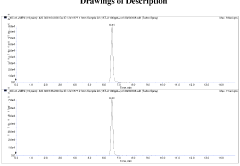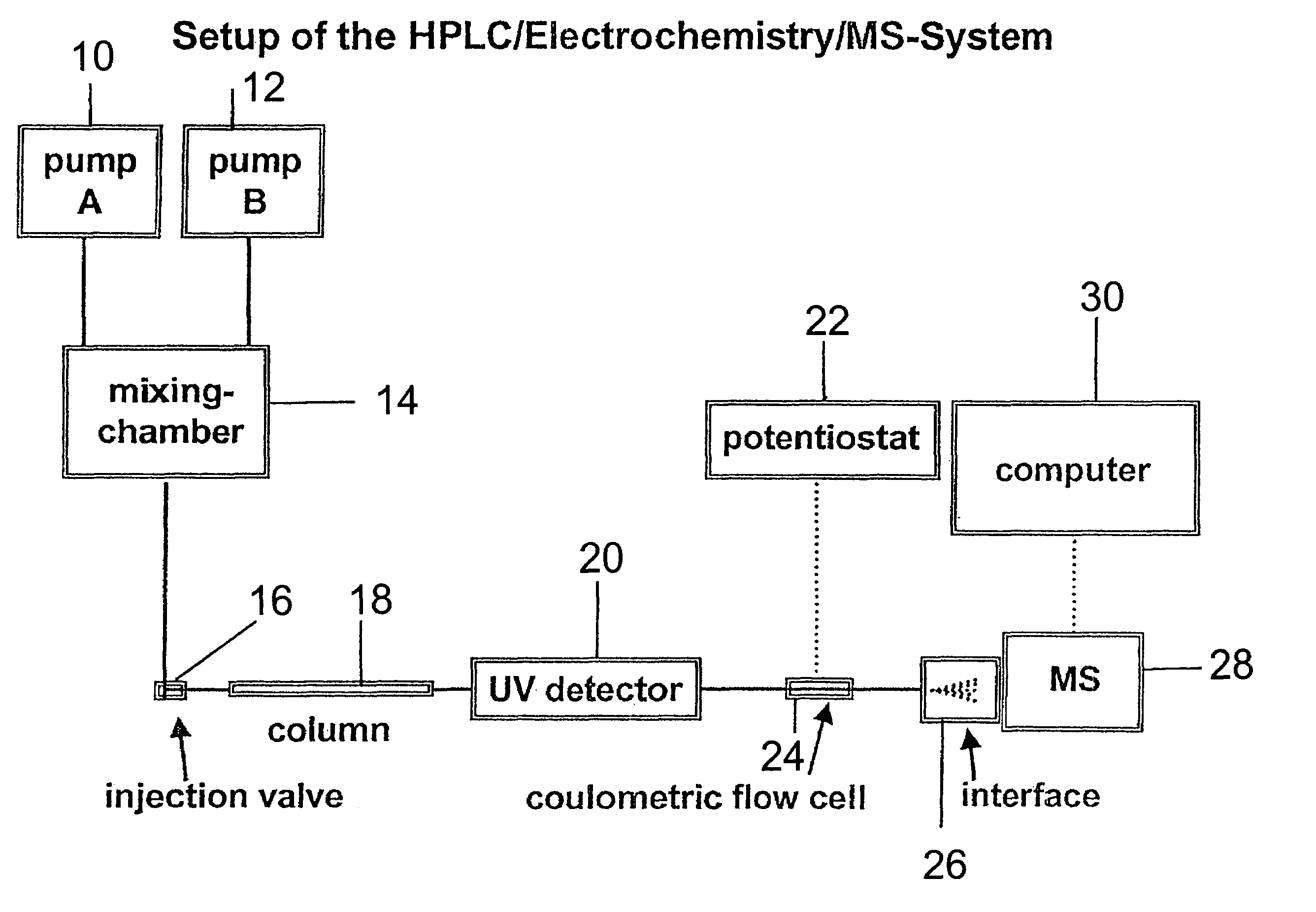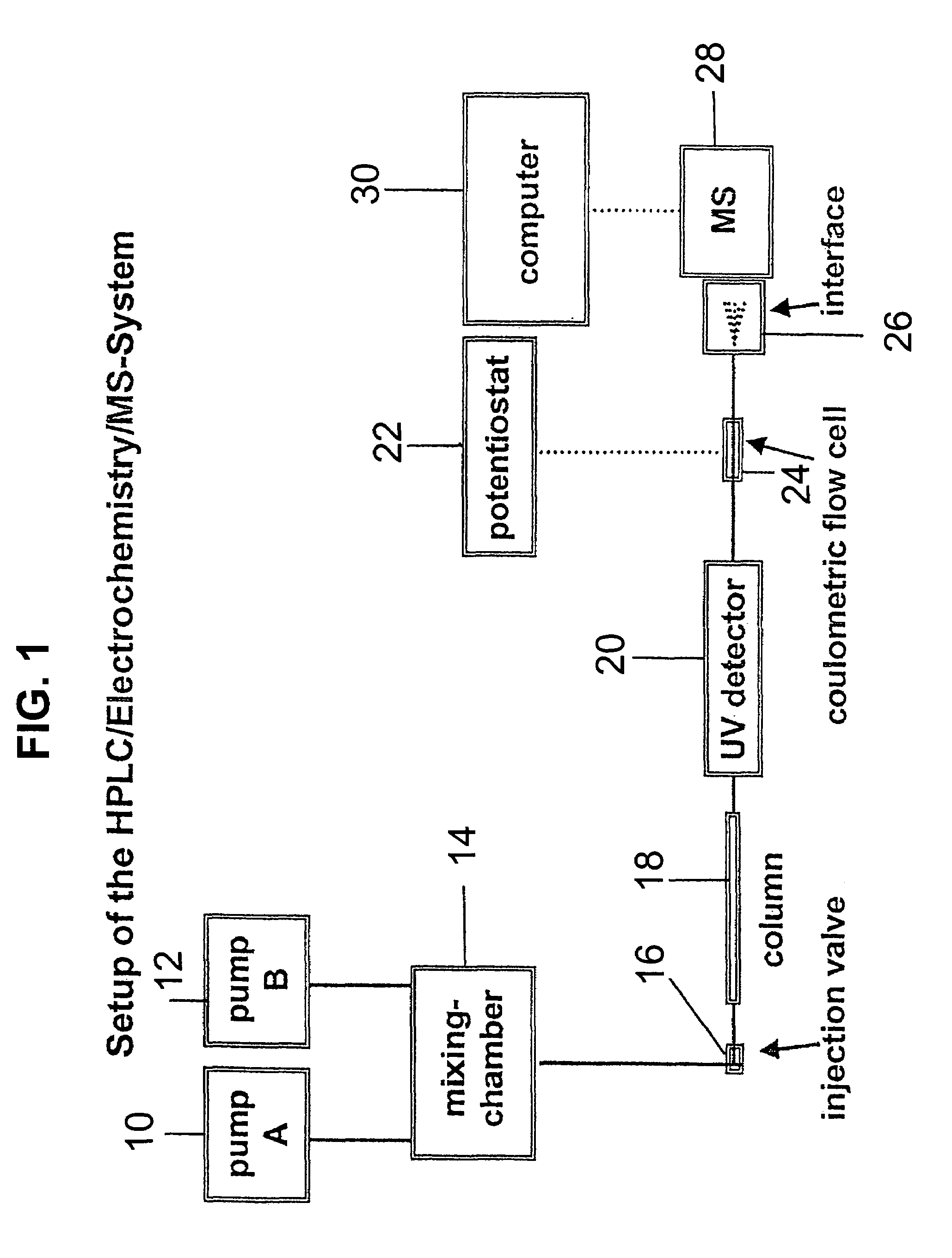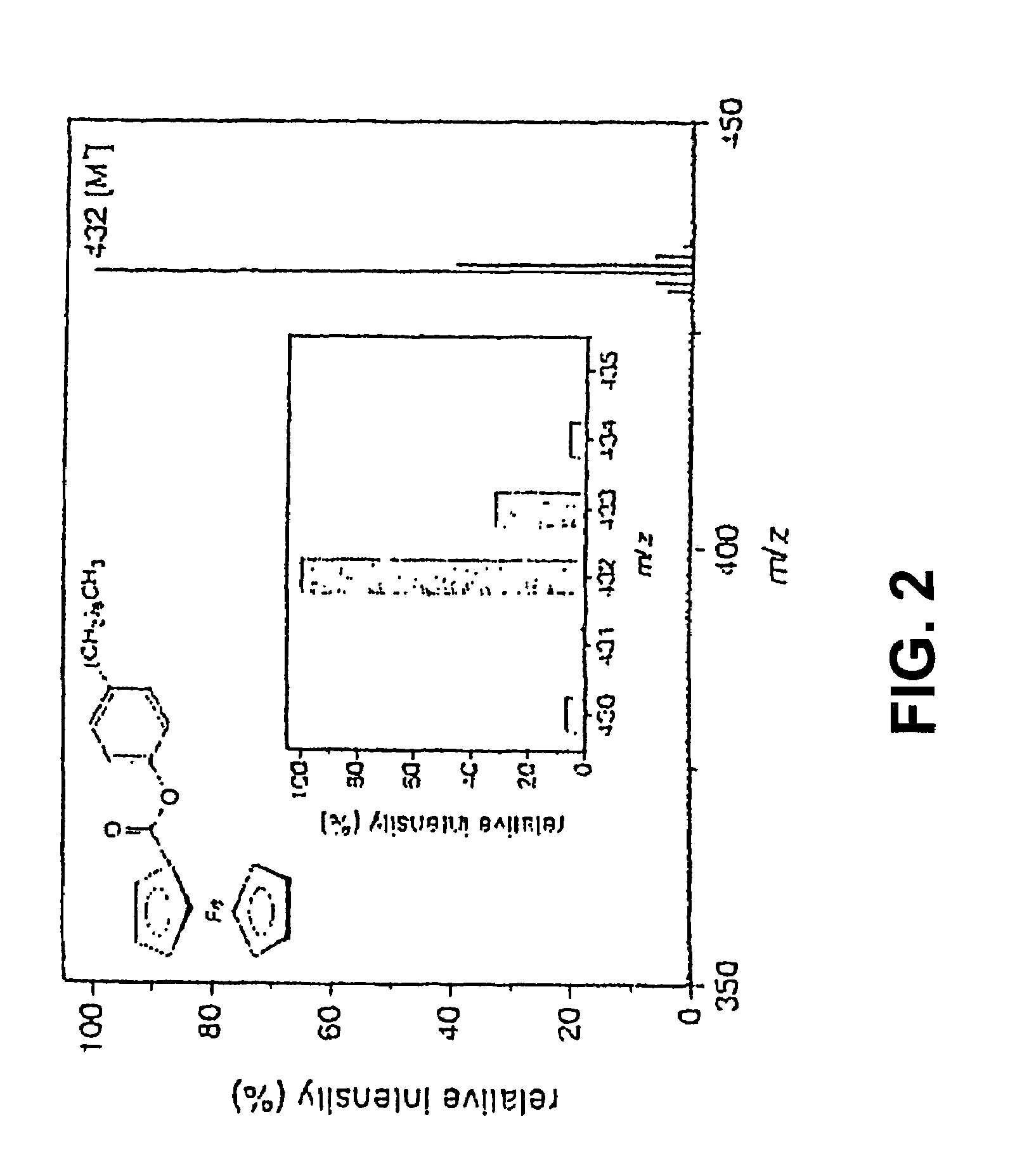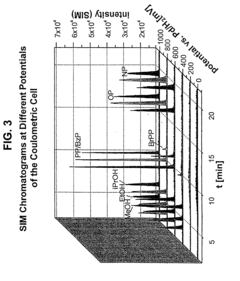How HPLC-MS Maintains Sensitivity During Fast Polarity Switching?
SEP 19, 20259 MIN READ
Generate Your Research Report Instantly with AI Agent
Patsnap Eureka helps you evaluate technical feasibility & market potential.
HPLC-MS Polarity Switching Background and Objectives
High-Performance Liquid Chromatography-Mass Spectrometry (HPLC-MS) has evolved significantly since its inception in the 1970s, becoming an indispensable analytical technique in pharmaceutical research, clinical diagnostics, environmental monitoring, and food safety. The integration of liquid chromatography's separation capabilities with mass spectrometry's identification power has revolutionized analytical chemistry by enabling the detection and quantification of complex mixtures with unprecedented sensitivity and specificity.
Polarity switching, a critical advancement in HPLC-MS technology, emerged in the early 2000s as researchers sought methods to analyze both positive and negative ions within a single analytical run. This capability addresses the fundamental challenge that different compounds ionize preferentially in either positive or negative mode, making comprehensive analysis traditionally time-consuming and sample-intensive.
The evolution of polarity switching technology has been driven by the increasing demand for high-throughput screening in drug discovery, metabolomics, and proteomics. Early systems required several seconds to switch polarities, significantly limiting chromatographic resolution. Modern instruments have reduced this transition time to milliseconds, representing a technological leap that has transformed analytical workflows.
Despite these advances, maintaining sensitivity during fast polarity switching remains a significant challenge. When instruments rapidly alternate between positive and negative modes, signal intensity often decreases due to ion transmission inefficiencies, reduced dwell times, and electrical stabilization issues. This sensitivity loss can compromise detection limits for trace analytes and affect quantitative accuracy.
The primary objective of this technical research is to comprehensively evaluate current approaches to maintaining sensitivity during fast polarity switching in HPLC-MS systems. We aim to identify the fundamental physical and engineering constraints that limit performance, assess the effectiveness of existing solutions, and explore emerging technologies that promise to overcome these limitations.
Additionally, this research seeks to establish benchmarks for sensitivity performance across different instrument platforms and methodologies, providing a framework for comparing technological approaches. By mapping the technological trajectory, we can better predict future developments and identify promising research directions.
The ultimate goal is to develop strategies that enable simultaneous high-sensitivity detection of both positively and negatively charged analytes without compromising chromatographic resolution or analytical throughput. Such advancements would significantly impact fields requiring comprehensive chemical profiling, including metabolomics, environmental analysis, and pharmaceutical development, by reducing analysis time, sample requirements, and operational costs while improving data quality and completeness.
Polarity switching, a critical advancement in HPLC-MS technology, emerged in the early 2000s as researchers sought methods to analyze both positive and negative ions within a single analytical run. This capability addresses the fundamental challenge that different compounds ionize preferentially in either positive or negative mode, making comprehensive analysis traditionally time-consuming and sample-intensive.
The evolution of polarity switching technology has been driven by the increasing demand for high-throughput screening in drug discovery, metabolomics, and proteomics. Early systems required several seconds to switch polarities, significantly limiting chromatographic resolution. Modern instruments have reduced this transition time to milliseconds, representing a technological leap that has transformed analytical workflows.
Despite these advances, maintaining sensitivity during fast polarity switching remains a significant challenge. When instruments rapidly alternate between positive and negative modes, signal intensity often decreases due to ion transmission inefficiencies, reduced dwell times, and electrical stabilization issues. This sensitivity loss can compromise detection limits for trace analytes and affect quantitative accuracy.
The primary objective of this technical research is to comprehensively evaluate current approaches to maintaining sensitivity during fast polarity switching in HPLC-MS systems. We aim to identify the fundamental physical and engineering constraints that limit performance, assess the effectiveness of existing solutions, and explore emerging technologies that promise to overcome these limitations.
Additionally, this research seeks to establish benchmarks for sensitivity performance across different instrument platforms and methodologies, providing a framework for comparing technological approaches. By mapping the technological trajectory, we can better predict future developments and identify promising research directions.
The ultimate goal is to develop strategies that enable simultaneous high-sensitivity detection of both positively and negatively charged analytes without compromising chromatographic resolution or analytical throughput. Such advancements would significantly impact fields requiring comprehensive chemical profiling, including metabolomics, environmental analysis, and pharmaceutical development, by reducing analysis time, sample requirements, and operational costs while improving data quality and completeness.
Market Demand for High-Sensitivity Fast Polarity Switching
The global market for high-sensitivity fast polarity switching in HPLC-MS systems has experienced significant growth, driven by increasing demands across pharmaceutical, biotechnology, clinical diagnostics, and environmental monitoring sectors. This technology addresses critical analytical challenges by enabling simultaneous detection of both positive and negative ions in a single run, substantially reducing analysis time and sample consumption.
In the pharmaceutical industry, the need for high-throughput drug discovery and development has created strong demand for advanced analytical techniques that can rapidly screen complex biological matrices. Market research indicates that pharmaceutical companies are increasingly investing in HPLC-MS systems with enhanced polarity switching capabilities to accelerate drug candidate identification and validation processes.
The biotechnology sector represents another major market driver, with researchers requiring sophisticated analytical tools for proteomics, metabolomics, and other "-omics" studies. The ability to maintain sensitivity during fast polarity switching is particularly valuable for comprehensive metabolite profiling, where compounds with diverse chemical properties must be detected in a single analysis.
Clinical laboratories have emerged as a rapidly growing market segment, with increasing adoption of LC-MS for clinical diagnostics. The demand for high-sensitivity fast polarity switching stems from the need to analyze multiple biomarkers simultaneously in limited sample volumes, particularly in areas such as therapeutic drug monitoring, toxicology screening, and newborn screening programs.
Environmental monitoring applications have also contributed to market growth, as regulatory agencies worldwide implement stricter requirements for comprehensive analysis of environmental contaminants. Fast polarity switching with maintained sensitivity allows for more efficient screening of diverse pollutants in water, soil, and air samples.
Market analysis reveals regional variations in demand patterns. North America and Europe currently represent the largest markets for high-sensitivity fast polarity switching technology, primarily due to established pharmaceutical and biotechnology sectors. However, the Asia-Pacific region is experiencing the fastest growth rate, driven by expanding research infrastructure and increasing adoption of advanced analytical techniques in countries like China, Japan, and South Korea.
Vendor data suggests that end-users are increasingly prioritizing sensitivity maintenance during fast polarity switching when making purchasing decisions for new HPLC-MS systems. This trend has intensified competition among major instrument manufacturers to develop innovative solutions that overcome the traditional sensitivity losses associated with rapid polarity transitions.
In the pharmaceutical industry, the need for high-throughput drug discovery and development has created strong demand for advanced analytical techniques that can rapidly screen complex biological matrices. Market research indicates that pharmaceutical companies are increasingly investing in HPLC-MS systems with enhanced polarity switching capabilities to accelerate drug candidate identification and validation processes.
The biotechnology sector represents another major market driver, with researchers requiring sophisticated analytical tools for proteomics, metabolomics, and other "-omics" studies. The ability to maintain sensitivity during fast polarity switching is particularly valuable for comprehensive metabolite profiling, where compounds with diverse chemical properties must be detected in a single analysis.
Clinical laboratories have emerged as a rapidly growing market segment, with increasing adoption of LC-MS for clinical diagnostics. The demand for high-sensitivity fast polarity switching stems from the need to analyze multiple biomarkers simultaneously in limited sample volumes, particularly in areas such as therapeutic drug monitoring, toxicology screening, and newborn screening programs.
Environmental monitoring applications have also contributed to market growth, as regulatory agencies worldwide implement stricter requirements for comprehensive analysis of environmental contaminants. Fast polarity switching with maintained sensitivity allows for more efficient screening of diverse pollutants in water, soil, and air samples.
Market analysis reveals regional variations in demand patterns. North America and Europe currently represent the largest markets for high-sensitivity fast polarity switching technology, primarily due to established pharmaceutical and biotechnology sectors. However, the Asia-Pacific region is experiencing the fastest growth rate, driven by expanding research infrastructure and increasing adoption of advanced analytical techniques in countries like China, Japan, and South Korea.
Vendor data suggests that end-users are increasingly prioritizing sensitivity maintenance during fast polarity switching when making purchasing decisions for new HPLC-MS systems. This trend has intensified competition among major instrument manufacturers to develop innovative solutions that overcome the traditional sensitivity losses associated with rapid polarity transitions.
Technical Challenges in Maintaining MS Sensitivity
Maintaining sensitivity during fast polarity switching in HPLC-MS represents one of the most significant technical challenges in modern analytical chemistry. The fundamental issue stems from the inherent trade-off between switching speed and signal stability. When mass spectrometers rapidly alternate between positive and negative ionization modes, the electrical fields within the instrument undergo dramatic fluctuations, causing ion transmission efficiency to decrease substantially during transition periods.
The voltage stabilization challenge presents a primary obstacle. Mass analyzers require precise voltage control across components including ion guides, quadrupoles, and detectors. During polarity switching, these voltages must change by thousands of volts within milliseconds. The capacitive nature of these components creates electrical transients that temporarily destabilize ion paths, resulting in sensitivity losses of up to 30-50% during switching events.
Ion optics optimization poses another significant hurdle. The optimal ion transmission parameters differ substantially between positive and negative modes due to the fundamentally different behavior of oppositely charged particles. Finding a compromise configuration that maintains acceptable sensitivity in both polarities without requiring extensive physical adjustments remains technically demanding.
Vacuum system stability represents a critical challenge often overlooked. Rapid voltage changes can induce micro-discharges within the vacuum chamber, temporarily increasing pressure and causing ion scattering. These pressure fluctuations, though brief, can significantly degrade sensitivity for several milliseconds after switching.
Data acquisition timing synchronization presents complex technical difficulties. The instrument must precisely coordinate the LC separation timeline, polarity switching events, and data collection windows. Any misalignment results in missed analyte detection or sensitivity loss during critical elution periods. This challenge becomes particularly acute when analyzing complex mixtures with closely eluting compounds requiring different polarities for detection.
Electronic noise management during switching events constitutes another major obstacle. The rapid voltage changes generate electromagnetic interference that can contaminate the detector signal. Sophisticated electronic filtering systems must discriminate between genuine analyte signals and switching-induced artifacts without compromising data quality.
Calibration stability across polarities remains problematic. Sensitivity calibration typically drifts differently between positive and negative modes, requiring complex compensation algorithms to maintain quantitative accuracy. This challenge intensifies when analyzing samples containing compounds spanning wide concentration ranges, where calibration errors can lead to significant quantification inaccuracies.
The voltage stabilization challenge presents a primary obstacle. Mass analyzers require precise voltage control across components including ion guides, quadrupoles, and detectors. During polarity switching, these voltages must change by thousands of volts within milliseconds. The capacitive nature of these components creates electrical transients that temporarily destabilize ion paths, resulting in sensitivity losses of up to 30-50% during switching events.
Ion optics optimization poses another significant hurdle. The optimal ion transmission parameters differ substantially between positive and negative modes due to the fundamentally different behavior of oppositely charged particles. Finding a compromise configuration that maintains acceptable sensitivity in both polarities without requiring extensive physical adjustments remains technically demanding.
Vacuum system stability represents a critical challenge often overlooked. Rapid voltage changes can induce micro-discharges within the vacuum chamber, temporarily increasing pressure and causing ion scattering. These pressure fluctuations, though brief, can significantly degrade sensitivity for several milliseconds after switching.
Data acquisition timing synchronization presents complex technical difficulties. The instrument must precisely coordinate the LC separation timeline, polarity switching events, and data collection windows. Any misalignment results in missed analyte detection or sensitivity loss during critical elution periods. This challenge becomes particularly acute when analyzing complex mixtures with closely eluting compounds requiring different polarities for detection.
Electronic noise management during switching events constitutes another major obstacle. The rapid voltage changes generate electromagnetic interference that can contaminate the detector signal. Sophisticated electronic filtering systems must discriminate between genuine analyte signals and switching-induced artifacts without compromising data quality.
Calibration stability across polarities remains problematic. Sensitivity calibration typically drifts differently between positive and negative modes, requiring complex compensation algorithms to maintain quantitative accuracy. This challenge intensifies when analyzing samples containing compounds spanning wide concentration ranges, where calibration errors can lead to significant quantification inaccuracies.
Current Solutions for Fast Polarity Switching
01 Sample preparation techniques for enhanced sensitivity
Various sample preparation methods can significantly improve HPLC-MS sensitivity. These include solid-phase extraction, liquid-liquid extraction, and protein precipitation techniques that help remove matrix interferences and concentrate analytes of interest. Advanced sample clean-up procedures can reduce ion suppression effects and improve detection limits by several orders of magnitude. Optimized extraction protocols ensure higher recovery rates of target compounds, leading to better quantification at trace levels.- Sample preparation techniques for enhanced sensitivity: Various sample preparation methods can significantly improve HPLC-MS sensitivity. These include solid-phase extraction, liquid-liquid extraction, and specialized derivatization techniques that enhance ionization efficiency. Proper sample clean-up reduces matrix effects and ion suppression, leading to lower detection limits and improved signal-to-noise ratios. Optimized extraction protocols can concentrate analytes of interest while removing interfering compounds.
- Ionization source optimization for improved detection: The choice and optimization of ionization sources greatly affects HPLC-MS sensitivity. Electrospray ionization (ESI), atmospheric pressure chemical ionization (APCI), and other ionization techniques can be optimized for specific analytes. Parameters such as spray voltage, capillary temperature, and sheath gas flow rate can be adjusted to enhance ion formation and transmission. Dual ionization sources can also be employed to improve the detection of compounds with different physicochemical properties.
- Mobile phase composition and gradient optimization: The composition of mobile phases and gradient elution profiles significantly impact HPLC-MS sensitivity. Addition of modifiers such as formic acid, ammonium acetate, or ammonium formate can enhance ionization efficiency. Optimized gradient profiles improve chromatographic separation and reduce ion suppression. The pH of mobile phases can be adjusted to maximize analyte ionization while maintaining good chromatographic performance. Selection of appropriate organic solvents can also improve sensitivity for specific compound classes.
- Advanced MS detection techniques and hardware modifications: Implementation of advanced mass spectrometry techniques can substantially improve sensitivity. These include multiple reaction monitoring (MRM), selected ion monitoring (SIM), and high-resolution mass spectrometry. Hardware modifications such as improved ion optics, enhanced vacuum systems, and specialized detectors can lower detection limits. Novel mass analyzers like quadrupole time-of-flight (Q-TOF) or Orbitrap technology offer superior sensitivity for complex samples. Tandem mass spectrometry (MS/MS) provides both enhanced selectivity and sensitivity.
- Chromatographic column selection and optimization: The choice of chromatographic columns significantly affects HPLC-MS sensitivity. Ultra-high performance liquid chromatography (UHPLC) columns with sub-2μm particles provide enhanced separation efficiency and sensitivity. Specialized column chemistries such as C18, HILIC, or mixed-mode phases can be selected based on analyte properties. Column temperature control and optimized flow rates contribute to improved peak shapes and detector response. Nano-LC columns with reduced internal diameters can dramatically increase sensitivity for limited sample amounts.
02 Mobile phase optimization for improved ionization efficiency
The composition of the mobile phase plays a crucial role in HPLC-MS sensitivity. Addition of specific modifiers such as formic acid, ammonium acetate, or ammonium formate can enhance ionization efficiency in both positive and negative modes. Optimizing pH, buffer concentration, and organic solvent ratios can significantly improve signal intensity. Gradient elution profiles can be tailored to maximize sensitivity for specific analyte classes while minimizing matrix effects that suppress ionization.Expand Specific Solutions03 Advanced MS detector technologies and parameters
Implementation of cutting-edge mass spectrometry technologies such as triple quadrupole, time-of-flight, and orbitrap analyzers can dramatically enhance sensitivity. Optimizing MS parameters including ionization voltage, collision energy, ion transfer tube temperature, and dwell time can improve signal-to-noise ratios. Multiple reaction monitoring (MRM) and selected ion monitoring (SIM) modes provide targeted analysis with significantly lower detection limits compared to full-scan approaches. High-resolution mass spectrometry enables differentiation between analytes with similar masses, reducing background interference.Expand Specific Solutions04 Chromatographic column selection and optimization
The choice of chromatographic column significantly impacts HPLC-MS sensitivity. Ultra-high performance liquid chromatography (UHPLC) columns with sub-2μm particles provide enhanced separation efficiency and narrower peaks, resulting in improved signal intensity. Specialized column chemistries such as C18, HILIC, or phenyl-hexyl can be selected based on analyte properties to maximize retention and separation. Column temperature control and optimized flow rates help maintain peak shape and resolution, contributing to better sensitivity and reproducibility.Expand Specific Solutions05 Novel derivatization and labeling strategies
Chemical derivatization and labeling techniques can enhance the ionization efficiency of poorly ionizable compounds. Introduction of easily ionizable functional groups or charge-bearing moieties can improve detection sensitivity by orders of magnitude. Isotope-coded labeling enables relative quantification with improved precision. Photochemical and electrochemical derivatization approaches provide alternatives for specific compound classes. These techniques are particularly valuable for analyzing compounds with poor MS response, such as certain metabolites, peptides, and small molecules.Expand Specific Solutions
Leading Manufacturers and Research Institutions
The HPLC-MS fast polarity switching technology market is currently in a growth phase, with increasing demand driven by pharmaceutical, environmental, and clinical applications requiring rapid multi-compound analysis. The global market size for advanced mass spectrometry systems is expanding at approximately 7-8% annually. Technologically, the field has reached moderate maturity with ongoing innovations focused on sensitivity preservation during rapid switching. Leading players include Agilent Technologies and Thermo Fisher Scientific (Bremen), who have developed proprietary solutions addressing ion transmission efficiency and electronic switching optimization. Shimadzu Corporation has made significant advances in high-speed voltage control systems, while academic institutions like University of York collaborate with industry partners to enhance fundamental understanding of ion behavior during polarity transitions, creating a competitive landscape balanced between established manufacturers and research institutions.
Agilent Technologies, Inc.
Technical Solution: Agilent's approach to maintaining HPLC-MS sensitivity during fast polarity switching centers on their Jet Stream ESI technology combined with advanced ion optics. Their system employs a dual-spray ion source that allows simultaneous positive and negative ion generation, eliminating the need for voltage switching delays. The Agilent 6500 Series Q-TOF LC/MS systems incorporate a high-speed polarity switching capability that achieves transition times under 100 milliseconds while maintaining sensitivity through optimized ion transmission paths. Their proprietary ion funneling technology ensures minimal ion loss during polarity transitions by creating a focused ion beam that remains stable regardless of polarity changes. Additionally, Agilent has developed specialized electronics that can rapidly stabilize detector voltages after polarity switching, reducing equilibration time and maintaining consistent sensitivity across both polarities. The system also employs intelligent scan rate adjustment algorithms that optimize dwell times based on compound characteristics, ensuring maximum sensitivity for targeted analytes even during rapid polarity switching operations.
Strengths: Superior ion focusing technology minimizes sensitivity loss during polarity transitions; ultra-fast switching times under 100ms maintain chromatographic integrity; comprehensive software integration optimizes acquisition parameters automatically. Weaknesses: Higher initial cost compared to single polarity systems; requires more complex method development; slightly reduced overall sensitivity compared to dedicated single polarity operation.
Hitachi High-Tech America, Inc.
Technical Solution: Hitachi High-Tech's approach to maintaining HPLC-MS sensitivity during fast polarity switching focuses on their innovative ion source design and specialized electronics in their ChromasterUltra Rs and LCMS-9050 systems. Their technology employs a dual-stage ion focusing system that creates a buffer region where ions can be temporarily stored during polarity transitions, minimizing sensitivity loss. Hitachi has developed a proprietary high-voltage switching circuit that achieves polarity transition times of approximately 15 milliseconds while maintaining voltage stability. Their system incorporates specialized ion optics with optimized geometries that create a more forgiving ion path during polarity changes, reducing ion loss even when voltages are in transition. Additionally, Hitachi's systems feature advanced detector electronics with rapid recovery capabilities that minimize signal stabilization time after polarity switching. Their software platform includes intelligent scheduling algorithms that optimize the timing of polarity switches based on chromatographic conditions and target analyte properties, ensuring maximum sensitivity for compounds of interest. Hitachi also employs a unique ion source design with carefully controlled electric field gradients that maintain stable ionization conditions during rapid polarity transitions.
Strengths: Excellent voltage stability during transitions minimizes sensitivity fluctuations; specialized ion optics design reduces ion loss during polarity changes; sophisticated software integration optimizes switching timing based on chromatographic conditions. Weaknesses: Slightly more complex source design increases maintenance requirements; optimal performance requires careful method development; system requires more frequent calibration when frequently switching polarities.
Key Innovations in Ion Transmission and Detection
Method for measuring migration volumes of additives in food contact material
PatentActiveAU2021105885A4
Innovation
- A method utilizing HPLC-MS/MS technology to measure migration volumes of additives, involving the preparation of standard solutions, sample treatment, and chromatography-tandem mass spectrum testing, which allows for the accurate and sensitive detection of multiple additives, satisfying specific migration volume limits and enabling quality control and regulatory compliance.
Coupling electrochemistry to mass spectrometry and high performance liquid chromatography
PatentInactiveUS7028537B2
Innovation
- A new HPLC-electrochemistry-MS technique is developed, where a coulometric three-electrode electrochemical cell is inserted between the HPLC column and mass spectrometer, enabling post-column electrochemical oxidation or reduction of analytes, forming charged or strongly polar products compatible with ESI or APCI mass spectrometry, thereby improving ionization efficiency.
Validation Methods and Performance Metrics
Validation of HPLC-MS systems during fast polarity switching requires comprehensive methodologies to ensure consistent sensitivity and reliable results. The primary validation approach involves systematic performance testing using standard reference compounds with known ionization behaviors in both positive and negative modes. These reference standards typically include compounds that ionize preferentially in one mode or exhibit dual-mode ionization characteristics.
Performance metrics for sensitivity maintenance during polarity switching can be categorized into several key parameters. Signal-to-noise ratio (S/N) comparison between dedicated single polarity runs versus fast-switching runs provides a direct measure of sensitivity preservation. Acceptable performance typically requires the fast-switching method to maintain at least 80-85% of the sensitivity observed in single-polarity mode.
Limit of detection (LOD) and limit of quantification (LOQ) determinations across both polarities serve as critical benchmarks. These metrics should be established for representative analytes in both ionization modes to verify that sensitivity remains sufficient for the intended analytical purpose. Comparative analysis between sequential separate polarity runs versus integrated fast-switching runs helps quantify any sensitivity compromises.
Reproducibility assessment constitutes another essential validation component, measuring both intra-day and inter-day coefficient of variation (CV) values for peak areas and retention times. For robust fast polarity switching methods, CV values should typically remain below 15% for peak areas and under 2% for retention times across multiple injections and days.
Carryover effects between polarities represent a unique validation concern for fast-switching systems. This can be evaluated by analyzing blank injections following high-concentration standards, with acceptable performance showing minimal signal (<0.1%) in subsequent runs. Additionally, polarity-specific ion suppression effects should be quantified through post-column infusion experiments while analyzing complex matrices.
System suitability tests (SSTs) should be developed specifically for fast polarity switching applications, incorporating metrics like switching time accuracy, mass accuracy maintenance across polarities, and chromatographic resolution preservation. These SSTs should be performed regularly to ensure ongoing system performance meets established validation criteria.
Performance metrics for sensitivity maintenance during polarity switching can be categorized into several key parameters. Signal-to-noise ratio (S/N) comparison between dedicated single polarity runs versus fast-switching runs provides a direct measure of sensitivity preservation. Acceptable performance typically requires the fast-switching method to maintain at least 80-85% of the sensitivity observed in single-polarity mode.
Limit of detection (LOD) and limit of quantification (LOQ) determinations across both polarities serve as critical benchmarks. These metrics should be established for representative analytes in both ionization modes to verify that sensitivity remains sufficient for the intended analytical purpose. Comparative analysis between sequential separate polarity runs versus integrated fast-switching runs helps quantify any sensitivity compromises.
Reproducibility assessment constitutes another essential validation component, measuring both intra-day and inter-day coefficient of variation (CV) values for peak areas and retention times. For robust fast polarity switching methods, CV values should typically remain below 15% for peak areas and under 2% for retention times across multiple injections and days.
Carryover effects between polarities represent a unique validation concern for fast-switching systems. This can be evaluated by analyzing blank injections following high-concentration standards, with acceptable performance showing minimal signal (<0.1%) in subsequent runs. Additionally, polarity-specific ion suppression effects should be quantified through post-column infusion experiments while analyzing complex matrices.
System suitability tests (SSTs) should be developed specifically for fast polarity switching applications, incorporating metrics like switching time accuracy, mass accuracy maintenance across polarities, and chromatographic resolution preservation. These SSTs should be performed regularly to ensure ongoing system performance meets established validation criteria.
Interfacing Technologies and System Integration
The integration of HPLC with mass spectrometry represents one of the most significant technological partnerships in analytical chemistry. Effective interfacing between these two powerful analytical techniques is crucial for maintaining sensitivity during fast polarity switching operations. Current interface technologies focus on optimizing the transition of analytes from liquid chromatography to the mass spectrometer while preserving signal integrity across rapid polarity changes.
Electrospray ionization (ESI) interfaces have evolved significantly to accommodate fast polarity switching requirements. Modern ESI sources incorporate advanced voltage stabilization circuits that can rapidly alternate between positive and negative modes with minimal settling time. These systems typically achieve polarity transitions in less than 20 milliseconds, allowing for comprehensive detection of both positively and negatively charged species within a single analytical run.
Dual-spray source configurations represent another innovative approach to interfacing challenges. These systems utilize parallel electrospray emitters dedicated to positive and negative ionization modes, eliminating the need for voltage switching at a single source. The computer-controlled pneumatic systems direct the eluent flow to the appropriate emitter based on the desired polarity, maintaining continuous sensitivity without compromising chromatographic resolution.
System integration advancements have focused on synchronizing the timing between chromatographic separation and mass detection events. State-of-the-art systems employ predictive algorithms that anticipate polarity switching requirements based on chromatographic profiles and expected elution patterns. This intelligent integration minimizes data loss during transition periods by optimizing dwell times and scan rates according to the specific analytical requirements.
Hardware innovations in interface design include improved ion transfer optics that maintain transmission efficiency regardless of ion polarity. Multi-stage ion guides with rapidly adjustable RF/DC parameters ensure consistent ion focusing and transmission during polarity transitions. These components typically incorporate ultra-fast electronics capable of reconfiguring voltage gradients within microseconds to accommodate changing ion behaviors.
Software integration plays an equally critical role in maintaining sensitivity during polarity switching. Advanced data acquisition systems implement sophisticated scheduling algorithms that coordinate polarity switching events with chromatographic separation. These systems can prioritize specific time segments for particular polarities based on expected analyte elution profiles, maximizing sensitivity for compounds of interest while minimizing unnecessary switching events.
Recent developments in interface technologies have introduced hybrid designs that combine multiple ionization mechanisms within a single source. These versatile interfaces can simultaneously generate ions through complementary processes, reducing reliance on rapid polarity switching while expanding the range of detectable compounds. Such innovations represent promising directions for overcoming traditional sensitivity limitations associated with polarity transitions in HPLC-MS systems.
Electrospray ionization (ESI) interfaces have evolved significantly to accommodate fast polarity switching requirements. Modern ESI sources incorporate advanced voltage stabilization circuits that can rapidly alternate between positive and negative modes with minimal settling time. These systems typically achieve polarity transitions in less than 20 milliseconds, allowing for comprehensive detection of both positively and negatively charged species within a single analytical run.
Dual-spray source configurations represent another innovative approach to interfacing challenges. These systems utilize parallel electrospray emitters dedicated to positive and negative ionization modes, eliminating the need for voltage switching at a single source. The computer-controlled pneumatic systems direct the eluent flow to the appropriate emitter based on the desired polarity, maintaining continuous sensitivity without compromising chromatographic resolution.
System integration advancements have focused on synchronizing the timing between chromatographic separation and mass detection events. State-of-the-art systems employ predictive algorithms that anticipate polarity switching requirements based on chromatographic profiles and expected elution patterns. This intelligent integration minimizes data loss during transition periods by optimizing dwell times and scan rates according to the specific analytical requirements.
Hardware innovations in interface design include improved ion transfer optics that maintain transmission efficiency regardless of ion polarity. Multi-stage ion guides with rapidly adjustable RF/DC parameters ensure consistent ion focusing and transmission during polarity transitions. These components typically incorporate ultra-fast electronics capable of reconfiguring voltage gradients within microseconds to accommodate changing ion behaviors.
Software integration plays an equally critical role in maintaining sensitivity during polarity switching. Advanced data acquisition systems implement sophisticated scheduling algorithms that coordinate polarity switching events with chromatographic separation. These systems can prioritize specific time segments for particular polarities based on expected analyte elution profiles, maximizing sensitivity for compounds of interest while minimizing unnecessary switching events.
Recent developments in interface technologies have introduced hybrid designs that combine multiple ionization mechanisms within a single source. These versatile interfaces can simultaneously generate ions through complementary processes, reducing reliance on rapid polarity switching while expanding the range of detectable compounds. Such innovations represent promising directions for overcoming traditional sensitivity limitations associated with polarity transitions in HPLC-MS systems.
Unlock deeper insights with Patsnap Eureka Quick Research — get a full tech report to explore trends and direct your research. Try now!
Generate Your Research Report Instantly with AI Agent
Supercharge your innovation with Patsnap Eureka AI Agent Platform!


